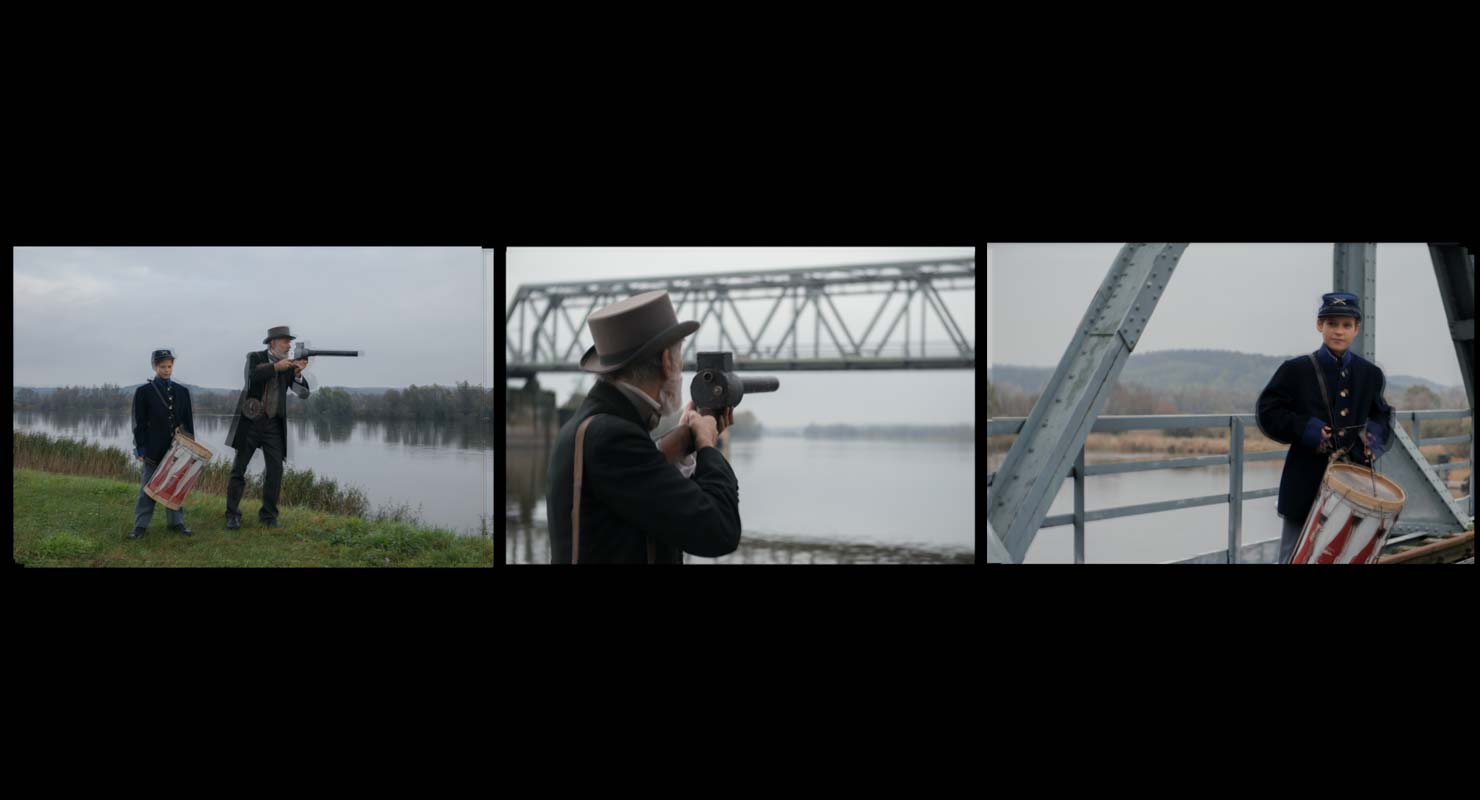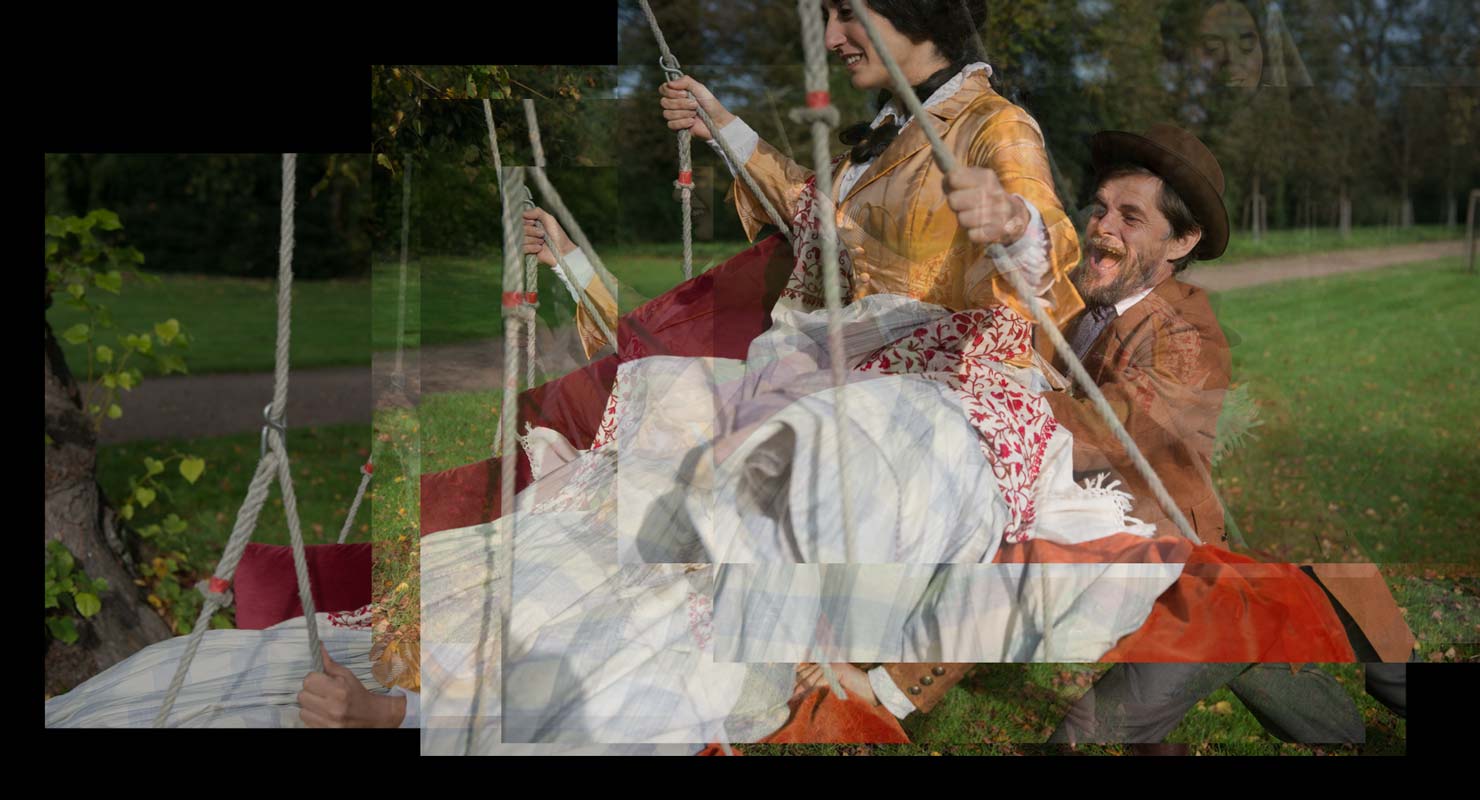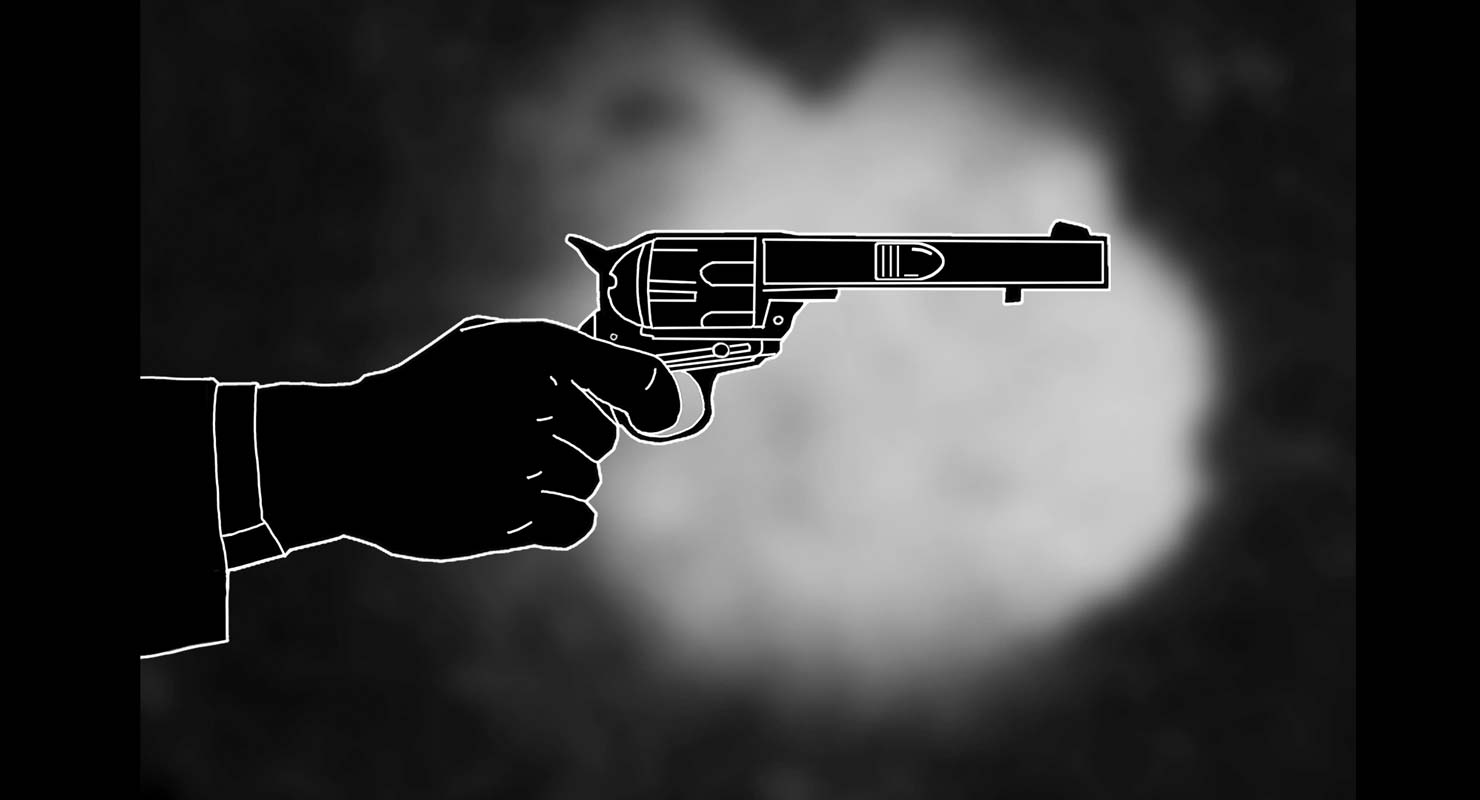Projekte
Seil
Film
Der Film SEIL ist eine Rekonstruktion von Ambrose Bierce Erzählung An Occurance at Owl Creek Bridge, veröffentlich 1891 in der Sammlung Cival War Stories. Bierce thematisiert »Dauer« als zeitliche Ausdehnung eines Ereignisses. Anhand eines »Vorfalls«, der Hängung des Südstaatlers Peyton Farquhar, beschreibt er unterschiedliche Zeitintervalle, die sich mit diesem einen Moment – dem Ende von Zeit – verbinden.
Für die Rekonstruktion wurde dieser eine Moment in seine Bestandteile zerlegt und in drei visuelle Ebenen: Panorama, Inszenierung, und Versuchsanordnung visualisiert.
Ausschnitt (dt):
Ausschnitt (engl):
»In ROPE - A DEAD MAN’S DREAM there is an exploration of the history and development of the photographic media. The reconstruction of the short story An Occurrence at Owl Creek Bridge by Ambrose Bierce is the basis for the adaptation, supplemented with the research work on chronophotography by Étienne-Jules Marey. The principle of chronophotography, which permitted the recording of movement sequences in phase images and made processes visible that had remained hidden to the human eye up to then, was transferred to the digital image-in-image montage in the enacted photo work Rope.
The stratigraphic method of the chronophotographers was taken up by us and recorded using the digital 'stacking process', then layered in the montage by compositing. In this way, movement sequences can be visualised à la Marey, or individual images stacked on one another can show how the illusion of movement à la Muybridge is created. Movement and space are addressed thematically in ROPE - A DEAD MAN’S DREAM in that directions of movement open up the space, or panoramas (taken on the battlefields of the American Civil War) are set in motion through methods inspired by Zoetropes.
All these techniques served to explore the nature or condition of the image in a cinematographic context. From this, one can recognise that images are neither still nor moving.
In ROPE - A DEAD MAN’S DREAM we attempted to comprehend the stratigraphic quality of the film image as something to be grasped in its depth. Playing with time and space expands our memories and powers of recall, and sharpens our “third sense” for a cinema of the future, one in which we consciously design and structure the meaning of movement in the image. […].«
Gusztáv Hámos: Think Future Cinema - With Photofilm as Its Basis, in: The Real of Reality: The Realist Turn in Contemporary Film Theory, editors Christine Reeh-Peters, Stefan W.Schmidt and Peter Weibel, 2021
Texte
Miklós Peternák: Construction - Hámos Gusztáv és Katja Pratschke kiállítása, erschienen am 29.7.2021, in: punkt.hu
Anne Murray: Gusztáv Hámos & Katja Pratschke, explorations of consciousness & its intersection with cinema, in: clotmag, 2021
Jószef Mélyi: Az idő: Kap, erschienen am 6.August 2021, in: Élet és Irodaom, Budapest, 2021
Luis Mendonca: Katja Pratschke e Gusztáv Hámos: Cinema and photography transposed, Katalog: Indie Lisboa, 2017 , S.120-124 [pdf]
Ricardo Vieira Lisboa: »Deves sempre surpreender o espectador/ entrevista: Gusztáv Hámos e Katja Pratschke«, in: À pala de walsh, 2017
Credits
Darsteller*innen
Peyton Farquhar: Lars Rudolph
George Demény/Sergeant: Oliver Elias
Ariadne Farquhar: Ariella Hirshfeld
Étienne-Jules Marey: Gusztáv Hámos
Drummer Boy: Isidor Hámos
Offizier: Mehdi Moinzadeh
Soldat/Plantagenarbeiter: Momo Ekissi
Soldat: Sebastian Bodirsky
Posten/Plantagenrbeiter: Raoni Opitz
Posten: Joel Böttcher
Schütze: Atau Hámos
Pferd: Billy
Pferd Betreuer*innen: Holger Johannnes, Denise Bertram
Erzähler: Lars Rudolph, Gusztáv Hámos, Patrick von Blume
Team
Fotografie: Gusztáv Hámos
Unterwasserfotografie: Janet Riedel
Assistent Unterwasser: Günter Schlabitz
Fotografie Marey: Guillaume Cailleau
Assistent Brücke: Larissa Rosa Lackner
Kostüm: Lucie Bates, Nora Bates
Make-up: Dana Hesse
Ausstattung: Wolfgang Gerhardt
Schnitt: Katja Pratschke, Gusztáv Hámos
Animation: Hanna Nordholt, Fritz Steingrobe
Colorist: Moritz Peters
Musikkonzept: Gusztáv Hámos
Aufnahme Schlagzeug: Michael Bothe
Schlagzeug: Isidor Hámos
Übersetzung Englisch: Finbarr Morrin
Ton: Thomas Kalbér
Toningenieur: Benjamin Spitzmüller
Sprachaufnahmen: Stibbtone Studio
Mischung: Martin Steyer
Studio: The Post Republic Hamburg
Drehbuch, Regie: Katja Pratschke, Gusztáv Hámos
Regieassistenz: Guillaume Cailleau, Sebastian Bodirsky
Produzentin: Katja Pratschke
Produktionsassistenz: Micha Rockel
Förderung: Medienboard Berlin-Brandenburg, FFHS, BKM, Film und Medien Stiftung NRW
Ausstellungen
»Construction: Gusztáv Hámos & Katja Pratschke«, Molnár Ani Galeria, Budapest, 2021
»Zeitfalten: Katja Pratschke/Gusztáv Hámos«, Kunstverein Familie Montez in der Honsellbrücke, Frankfurt am Main, 2019
Projektionen
Ciclo CINEMA E FOTOGRAFIA: VISÕES ESPECTRAIS, Serralves, Casa do Cinema Manoel de Oliveira, Porto, 2021
Rencontres International Traverse Toulouse, 2020
Pathshala South Asian Media Institute, Vortrag und Projektion, Dhaka Bangladesh, 2019
RWTH Aachen, Studiengang Architektur, Einführung Fotofilm, 2019
Kunsthochschule Weißensee, FB Raumstrategien, Seminar Fotofilm, 2018
»Masterclass: Gusztáv Hámos & Katja Pratschke«, 29. Festival Intern. de Curtas Metragens Sao Paulo, 2018
Timeline#4, Festival Inter. de video arte em Belo Horizonte, 2018
Focus Section Silvestre: Katja Pratschke & Gusztáv Hámos, Indie Lisboa 2017
Aesthetica Short Film Festival (ASFF) York, 2017
Seoul International New Media Festival (NeMaF) South Korea, 2017
Strangloscope - Int. Experimental, Audio and Performance Festival Florianopolis, Brasilien, 2017
"analog_digital_Fotofilm", Filmarchiv Wien, 2017
Medienlabor der FH Dortmund im Dortmunder U - Zentrum für Kunst und Kreativität, 2017
»PHILM«, Kunstuniversität Linz, Vortrag und Projektion, 2017
MontageForum, Filmuniversität Potsdam, 2017
Filmets - Film Festival Badalona, 2017
Open Society Archive Budapest, Vorführung/Vortrag, 2017
Alchemy Experimental Film and Moving Image Festival, Hawick, Scotland, 2017





















